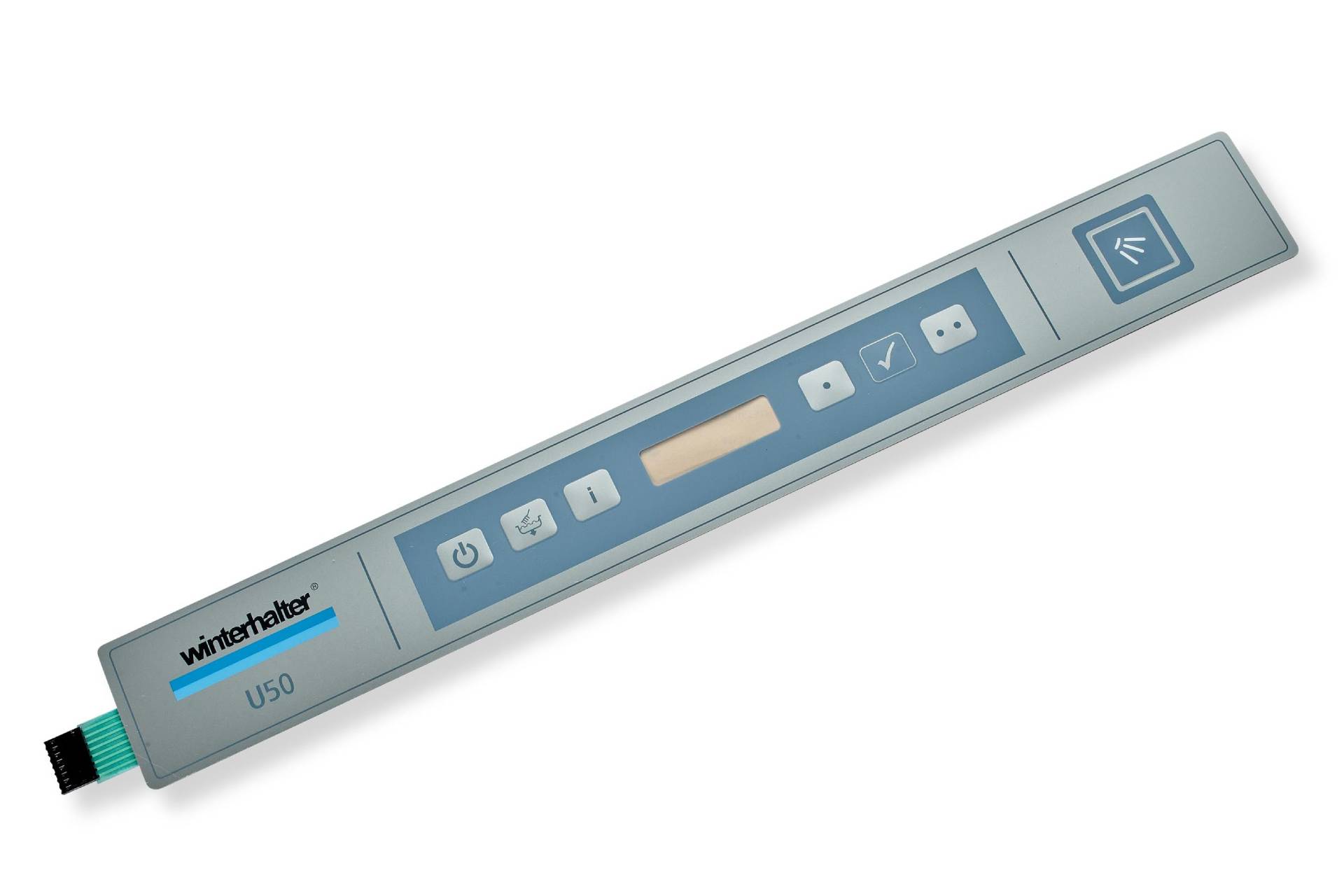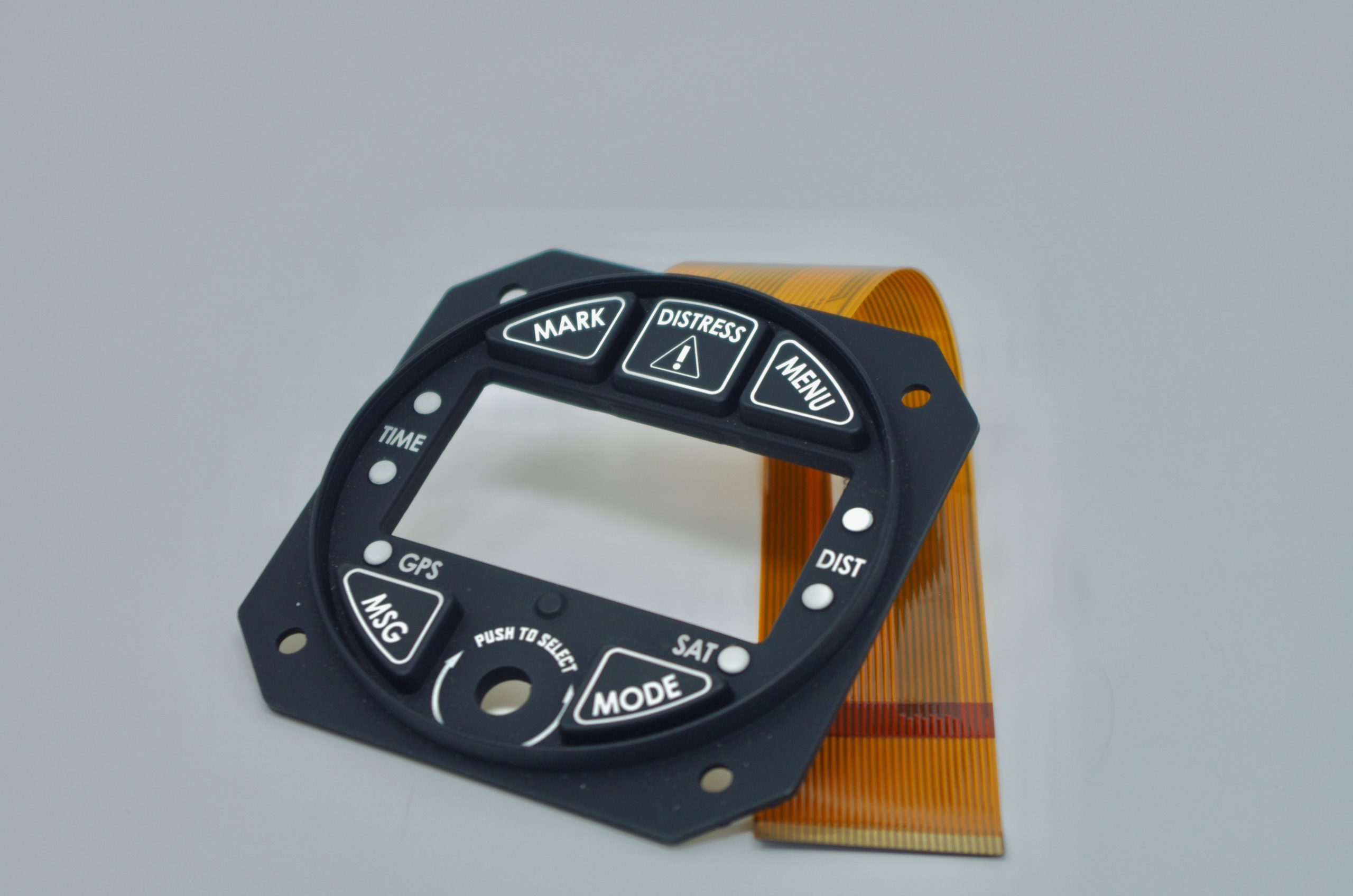Discovering the Manufacturing Process Behind Rubber Keypads and Their Significance in Modern Tools
Rubber keypads are critical in the capability of modern devices. Their production process involves mindful option of materials and specific methods. Keypads are designed to improve customer interaction while guaranteeing toughness and reliability. Recognizing how these components are made discloses their value across various applications. What aspects add to their efficiency, and exactly how do these components affect user experience? The answers might reshape perceptions of this day-to-day technology.
Review of Rubber Keypads and Their Applications

Rubber keypads are flexible parts extensively utilized in various digital tools, ranging from customer electronics to industrial tools. Their style permits a tactile response, making them a suitable selection for applications needing individual interaction. Commonly found in products such as remote controls, calculators, and medical gadgets, rubber keypads help with convenience of usage and accessibility.
In industrial setups, they serve critical functions in machinery and control board, where toughness and resistance to environmental factors are necessary. The non-slip surface area improves grasp, promoting dependability in requiring problems. Furthermore, their lightweight nature and personalized shapes enable suppliers to create customized solutions that fit certain needs. With innovations in technology, rubber keypads proceed to evolve, incorporating functions like backlighting and improved level of sensitivity. On the whole, their adaptability and functional benefits contribute considerably to the effectiveness of different devices throughout multiple markets.
Materials Utilized in Rubber Keypad Production
Keypad manufacturing relies upon an option of products that boost both functionality and durability. The primary material used in the production of rubber keypads is silicone rubber, recognized for its superb strength and flexibility. This material allows keypads to stand up to duplicated pressing without shedding shape or performance. Furthermore, thermoplastic elastomers (TPE) are commonly made use of because of their simplicity of molding and capability to supply a soft-touch feel.
Coloring agents, such as pigments, are integrated to guarantee lively, durable colors that enhance visual allure. In addition, ingredients like anti-UV representatives and fire retardants may be combined into the rubber to improve weather resistance and security compliance. The selection of products directly influences the keypad's tactile feedback, durability, and overall performance in numerous gadgets. Ultimately, the mindful choice of these components is essential for the manufacturing of high-quality rubber keypads that fulfill customer and industry needs.
The Style Process of Rubber Keypads
When creating rubber keypads, the layout process plays an important function in identifying functionality and customer experience. Designers start by specifying the keypad's intended usage, thinking about variables such as the gadget it will certainly go along with and the target user group. This preliminary stage includes mapping out designs that prioritize ergonomic aspects, ensuring the keys are easily accessible and suitably spaced.
Next, designers concentrate on the responsive feedback desired from the keypads, which influences the selection of products and essential forms. Prototyping is important in this stage, permitting developers to evaluate numerous designs for comfort and responsiveness.

Production Techniques for Rubber Keypads
The production process for rubber keypads involves a series of accurate techniques that ensure high quality and functionality. Liquid silicone rubber (LSR) is typically utilized due to its durability and versatility. The process starts with blending the raw materials, including silicone, colorants, and treating representatives. This mixture is then infused right into mold and mildews designed to shape the keypads properly.
Following shot, the molded keypads undergo healing, a home heating process that solidifies the material (Rubber Keypads). This is normally carried out in a press, ensuring the keypads attain the desired hardness and resilience

Top Quality Control Procedures in Production
To guarantee that rubber keypads satisfy high criteria of high quality and capability, rigorous quality assurance steps are executed throughout the manufacturing process. These procedures begin with raw material examination, making sure that only the highest-grade elastomers are utilized. Throughout the production stage, drivers conduct routine checks to keep track of parameters such as temperature, pressure, and mixing times, important for attaining consistent item quality.
Post-production, each set of keypads goes through detailed testing, including responsive action assessments and resilience examinations to assess efficiency under numerous problems. Visual assessments are likewise conducted to recognize any defects, such as bubbles or inconsistencies in appearance. Furthermore, compliance with industry criteria is validated, making certain that the keypads satisfy safety and performance criteria.
The Role of Innovation in Keypad Development
Innovation plays a vital duty in the growth of rubber keypads by enabling innovative production techniques that boost precision and performance. In addition, innovative material option permits boosted resilience and responsiveness in keypad efficiency. These improvements not only enhance manufacturing my blog but also raise the general quality of the last product.
Advanced Production Techniques
Innovations in production techniques reinvent the manufacturing of rubber keypads, boosting both efficiency and accuracy. Technologies such as injection molding and 3D printing have changed standard processes, enabling producers to create complicated layouts with minimized waste and boosted turnaround times. Automation plays a vital function in this development, streamlining assembly lines and lessening human mistake. In addition, computer-aided layout (CAD) software application enables for detailed customization, making sure that keypads satisfy certain customer demands. Quality assurance useful site procedures have also progressed, integrating real-time monitoring systems that spot problems early in the production cycle. These technologies not just boost the longevity and capability of rubber keypads however also support the growing demand for tailored solutions in numerous markets, from customer electronic devices to automotive applications.
Innovative Product Option
The advancement of producing techniques has led the method for cutting-edge material selection in rubber keypad growth. Developments in polymer science have presented materials that improve resilience, flexibility, and responsive comments. Manufacturers currently make use of thermoplastic elastomers (TPE) and silicone compounds, which supply remarkable resistance to wear and environmental factors. These products allow for the development of keypads that can withstand prolonged use while maintaining visual charm. Furthermore, the combination of additives and coverings boosts capability, such as boosting grasp and lowering rubbing. The option of products is crucial, as it straight impacts the performance and longevity of keypads in different devices, from consumer electronics to industrial devices. This innovative technique continues to shape the future of keypad style and usability.
The Influence of Rubber Keypads on Customer Experience
Rubber keypads considerably influence individual experience with their boosted tactile response, which permits more accurate communication. Additionally, their longevity and long life add to consistent performance with time, reducing the demand for frequent replacements. This mix of features makes rubber keypads a favored option in different applications, inevitably influencing individual contentment.
Enhanced Tactile Action
Enhancing tactile reaction considerably influences customer experience, especially in tools that rely upon keypads for interaction. Rubber keypads offer a special combination of softness and strength, allowing individuals to really feel unique feedback with each press. This feedback reinforces a sense of control and accuracy, critical in applications varying from smart devices to commercial devices. Customers commonly report greater contentment and performance when useful source communicating with gadgets that feature well-designed rubber keypads, as they assist in quicker and much more accurate input. Additionally, the ergonomic design of these keypads can decrease finger fatigue, promoting longer usage periods without discomfort. In general, the boosted tactile reaction offered by rubber keypads substantially adds to a much more user-friendly and satisfying individual experience in modern technology.
Longevity and Long life
An essential element of user experience with rubber keypads depends on their sturdiness and longevity. These keypads are created to stand up to considerable usage, standing up to wear and tear that usually impacts other products. The durable nature of rubber assurances that keypads preserve their functionality and appearance gradually, which is essential for tools frequently utilized in different environments. Individuals take advantage of the reliability of rubber keypads, as they can endure exposure to temperature level, dampness, and dust variations without weakening. This resilience not just boosts customer contentment however additionally minimizes the requirement for frequent substitutes, ultimately adding to cost-effectiveness for manufacturers. Essentially, the longevity of rubber keypads significantly affects the total efficiency and individual experience in contemporary devices.
Frequently Asked Inquiries
For How Long Do Rubber Keypads Typically Last in Tools?
Rubber keypads commonly last between 5 to one decade, relying on usage, environmental factors, and quality of materials made use of (Rubber Keypads). Regular deterioration can shorten their life-span, influencing capability and customer experience gradually
Can Rubber Keypads Be Personalized for Particular Applications?
Rubber keypads can indeed be customized for particular applications, allowing changes in dimension, appearance, shape, and shade. This flexibility makes it possible for manufacturers to create customized remedies that fulfill varied customer needs and improve functionality in various tools.
Are Rubber Keypads Eco-friendly?
Rubber keypads are typically not taken into consideration ecologically pleasant as a result of their petroleum-based products. However, advancements in lasting manufacturing practices and the advancement of bio-based options are gradually enhancing their environmental influence in various applications.
What Prevail Concerns Faced During Rubber Keypad Production?
Common concerns encountered throughout rubber keypad production consist of irregular worldly top quality, mold flaws, incorrect treating times, bond failings, and difficulties in accomplishing specific tactile feedback. These problems can result in lowered product performance and client dissatisfaction.
Exactly How Do Rubber Keypads Contrast to Various Other Sorts Of Secret Switches Over?
Rubber keypads supply a softer feel and quieter procedure compared to mechanical buttons, which offer tactile comments. Nevertheless, rubber keypads may wear out faster and do not have the accuracy that some customers like in high-performance applications.
The main product made use of in the manufacturing of rubber keypads is silicone rubber, known for its superb strength and flexibility. When developing rubber keypads, the layout procedure plays a vital role in identifying performance and customer experience. Rubber keypads substantially affect individual experience with their boosted responsive response, which enables for even more precise communication. Individuals commonly report higher fulfillment and effectiveness when connecting with tools that feature properly designed rubber keypads, as they facilitate quicker and more precise input. A vital element of individual experience with rubber keypads lies in their durability and longevity.